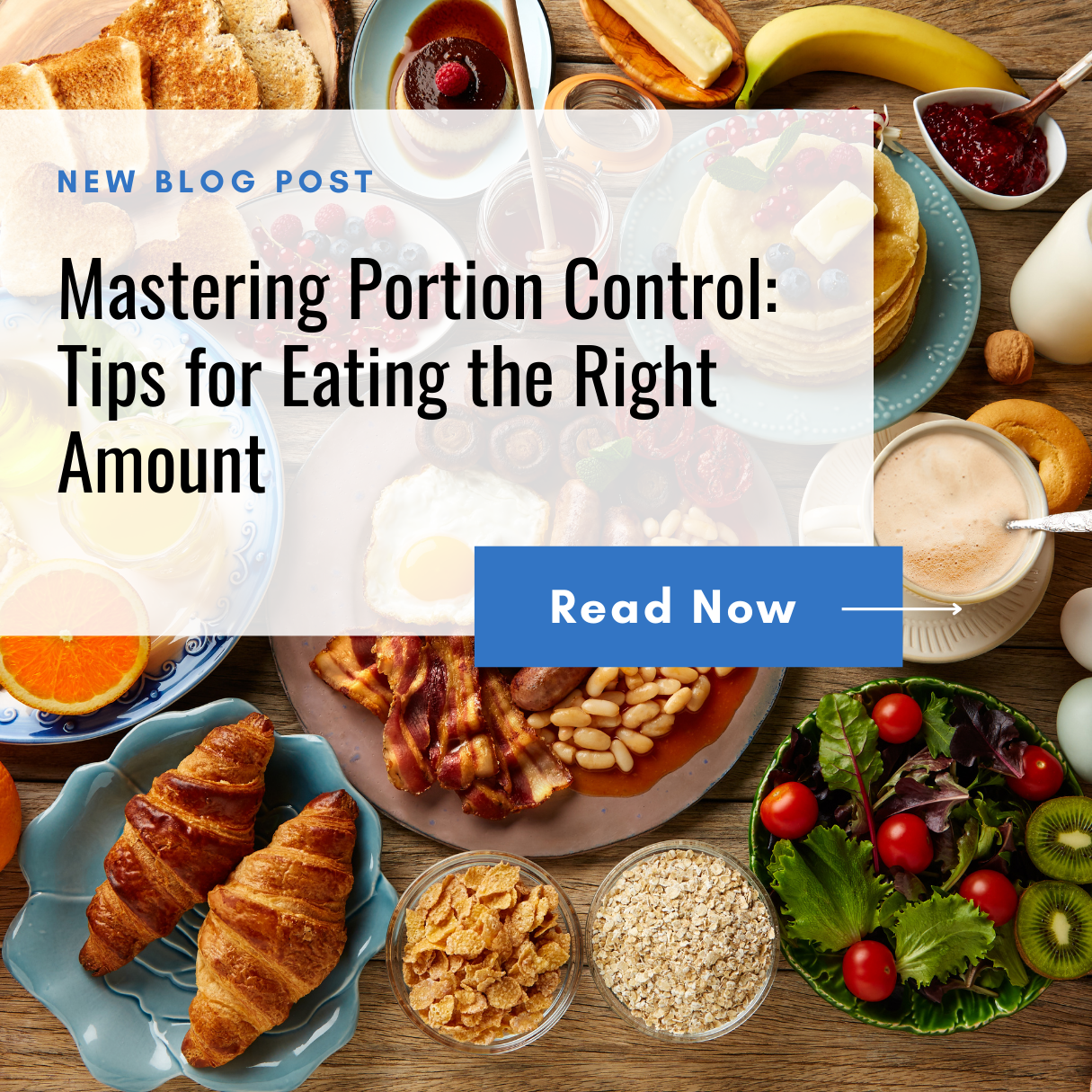Discover effective strategies for mastering portion control and maintaining a healthy diet.
Identifying Proper Serving Sizes
Properly identifying serving sizes is essential for portion control. Many people underestimate the amount of food they consume, leading to overeating and weight gain. To determine the correct serving size, refer to the nutrition labels on packaged foods. Pay attention to the serving size listed and compare it to the amount you typically eat. You can also use measuring cups or a food scale to accurately measure your portions. By understanding proper serving sizes, you can ensure you're eating the right amount.
Another important aspect of identifying proper serving sizes is familiarizing yourself with visual cues. For example, a serving of meat should be about the size of a deck of cards, while a serving of pasta should be about the size of a tennis ball. By visualizing these portion sizes, you can train yourself to recognize appropriate amounts of food.
Practical Tips for Portion Control
There are several practical tips you can follow to control your portions effectively. First, try using smaller plates and bowls. When you serve food on a smaller plate, it creates the illusion of a larger portion, making you feel more satisfied. Additionally, be mindful of portion sizes when dining out. Restaurants often serve oversized portions, so consider sharing a meal with a friend or asking for a to-go box to save the leftovers for later.
Another helpful tip is to eat slowly and savor each bite. It takes about 20 minutes for your brain to register that you're full, so eating slowly gives your body time to recognize satiety. Additionally, try to avoid distractions while eating, such as watching TV or scrolling through your phone. By focusing on your meal, you'll be more aware of your portion sizes and overall food intake.
Mindful Eating Techniques
Mindful eating is a powerful tool for portion control. It involves paying attention to your body's hunger and fullness cues and being present in the moment while eating. Before you start a meal, take a moment to assess your hunger level on a scale of 1 to 10. Aim to start eating when you're at a 3 or 4, and stop when you reach a 7 or 8. This allows you to eat until you're satisfied without overdoing it.
Another mindful eating technique is to chew your food thoroughly and savor the flavors. By eating slowly and mindfully, you'll be able to enjoy your meal more and feel more satisfied with smaller portions. Additionally, try to listen to your body and eat when you're truly hungry, rather than out of boredom or emotions. By practicing mindful eating, you can develop a healthier relationship with food and improve portion control.
Creating a Sustainable Portion Control Plan
To make portion control a sustainable habit, it's important to create a plan that works for you. Start by setting realistic goals and gradually reducing your portion sizes. Trying to make drastic changes overnight can be overwhelming and unsustainable. Instead, focus on making small, manageable changes that you can maintain in the long run.
Meal planning and prepping can also be helpful for portion control. By preparing your meals in advance, you have more control over the ingredients and portion sizes. Pack your meals in portioned containers to avoid overeating. Additionally, keep healthy snacks readily available to prevent mindless eating and reaching for unhealthy options. By having nutritious options on hand, you'll be more likely to make better choices.
Lastly, find support and accountability. Share your portion control goals with a friend or family member who can help keep you motivated. Consider joining a support group or seeking guidance from a registered dietitian. Having someone to hold you accountable can greatly increase your success in maintaining portion control.
Understanding the Importance of Portion Control
Portion control plays a crucial role in maintaining a healthy weight and preventing overeating. When we consistently consume more food than our bodies need, it can lead to weight gain and various health issues, such as obesity, heart disease, and diabetes. By practicing portion control, we can ensure that we're providing our bodies with the right amount of nutrients without overloading them.
In addition to weight management, portion control also helps with digestion and energy levels. Eating large portions can strain our digestive system, leading to discomfort and sluggishness. By eating smaller, balanced meals, we can support our digestion and maintain steady energy levels throughout the day. Portion control is not about depriving ourselves but rather about finding a balance that promotes overall health and well-being.
Curb Your Appetite with Semaglutide from B Health RX
If you're struggling with portion control and weight management, there are medical options available to assist you. Semaglutide, available from B Health RX, is an FDA-approved medication that can help curb your appetite and promote weight loss. It works by mimicking the effects of a hormone called GLP-1, which reduces hunger and increases feelings of fullness. Click HERE to learn more about this effective and affordable weight loss therapy.
Before considering any medication, it's important to consult with your healthcare provider to determine if it's the right option for you. They can assess your individual needs and provide guidance on incorporating medication into your overall portion control plan.
Remember, medication should always be used in conjunction with healthy eating habits and regular exercise. It's not a standalone solution but rather a tool to support your weight loss journey.




